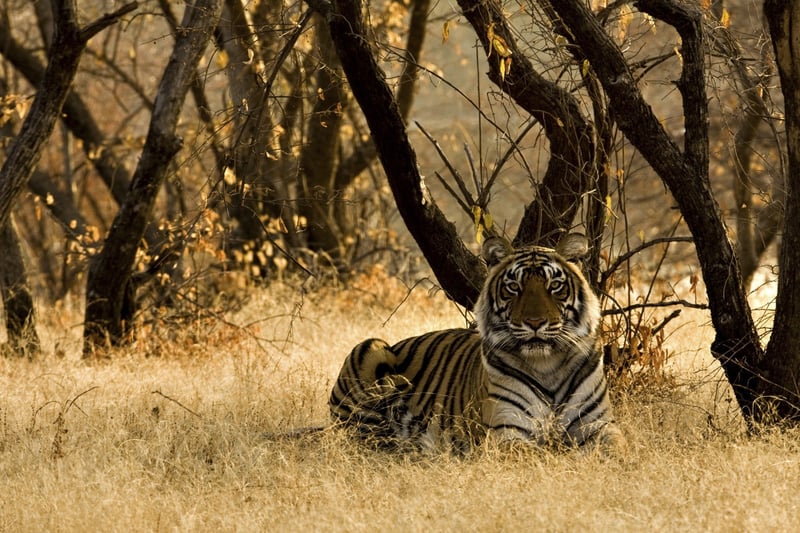
According to the Making Peace with Nature UN report released last month, one million of the world’s estimated 8 million species of plants and animals are threatened with extinction, driven by a number of factors relating to the climate emergency, habitat loss, and pollution.
Transforming humankind’s relationship with the planet and all its inhabitants is vital if we’re to leave a world worth living in for future generations. But what can any single individual do to help alleviate these seemingly inordinate challenges? We all have the power to prevent biodiversity loss and protect endangered animals every day by where we go, what we do, and what we consume.
Let wild animals be wild
We’re all dying for that once-in-a-lifetime vacation experience interacting with nature. Unfortunately, studies show that it’s animal lovers who most often (unwittingly) contribute to animal suffering. Whether it’s riding elephants in Asia (the Asian elephant has been listed as “endangered” on the IUCN Red List since 1986, and their population has declined by at least 50 percent over the last three elephant generations) or going to see a captive orca show at a marine mammal park (the Southern Resident orcas who live off the US Pacific coastline are critically endangered) our patronage of captive animal entertainment presents a real threat to their wild counterparts.
While animals held captive for entertainment are typically bred in captivity (and spend their entire lives there), their gene pool is usually supplemented with wild-caught species adding to the decline of wild populations. Furthermore, studies suggest that seeing animals in captivity gives a false sense of security about their vulnerabilities in the wild—adding to the removal of, or lack of support for, protections for animals in the wild.
Picture this
World Animal Protection’s report, A Close Up on Cruelty, demonstrated the disastrous consequences of tourists wanting that perfect animal selfie. An alarming 61% of the species identified in the report as being offered for photos and other direct contact activities are provided international legal protection by the Convention on the Trade in Endangered Species (CITES). World Animal Protection’s study found that the most common species used for selfies in the Amazon were Pink river dolphins and sloths, both of which have some conservation listings in the wild. Pink river dolphins are typically baited with fish and surrounded by noisy groups of tourists. Meanwhile, hundreds of sloths are taken from the wild each year to be used as photo props for tourists, where they are constantly surrounded by noise and poorly handled by both guides and tourists alike.
When you are traveling, follow World Animal Protection’s Wildlife Selfie Code to ensure that you’re not contributing to their suffering or population decline.
Wild animals don’t belong in your home
The hundreds of millions of birds, mammals, fish, and reptiles traded worldwide as exotic pets are typically bred in captivity, but as World Animal Protection’s report Suffering in Silence highlighted, their populations are usually supplemented with animals who are stolen from the wild. According to CITES, over three million individual ball pythons—the most common exotic pet snake species—have been exported from West Africa since the first recorded live commercial export in 1975. The huge number of animals being caught to meet the variety of consumer demands is considered a major potential threat.
Once the novelty of owning a wild animal wears off, they are often dumped outside, threatening native wildlife. Most invasive fish and wildlife populations have been established through the escape or intentional release of captive exotic animals. In fact, invasive species are the second leading cause of animal population decline and extinction worldwide. They have contributed directly to the decline of 42% of threatened and endangered species in the United States and cost an estimated $120 billion each year to detect, collect, and remove.
Another bizarrely popular exotic pet species is the tiger. People typically purchase tigers as cubs when they are small and easy to handle, forgetting or not realizing that they grow to a dangerous size, and when they become too large to handle, they are typically dumped at roadside zoos or left in backyards to spend their adult years in a cage. Tigers are considered endangered in the wild. In fact, there are more tigers in captivity in the US than there are tigers anywhere in the wild.
Go plant-based
One animal who has received a great deal of attention over the last year because of the role they were suspected of playing in the outbreak of COVID-19 is the pangolin. Known as “the world’s most trafficked animal,” pangolins are critically endangered, partly, because their scales, which are used in traditional medicine (TM), are thought to help unblock blood clots and promote blood circulation, among other uses. However, increasingly TM practitioners are turning to plant-based alternatives to wild animal preparations and advocating for an end to the exploitation of wildlife for medicine.
While the proportion of the audience reading this who uses TM products is probably small, every one of us can help endangered animals every time we sit down to eat. Deforestation and habitat destruction are perhaps the biggest causes of species extinction, and much of this is driven by our insatiable demand for animal protein.
The UN is one of a growing number of international bodies calling for an extensive shift away from animal agriculture, in order to preserve biodiversity. You can play your part by committing to eat less meat. It’s perhaps the most simple, but the most effective, single-action any one of us can take to help protect endangered animals and their habitats.
Join Our Mailing List
If you’re willing to do more to help endangered animals, please sign up for our newsletter to discover weekly actions you can take to help improve the lives of all animals. It’s free, fun, and rewarding. Change starts today.